Jack White: Analog Enthusiast and Sonic Maverick
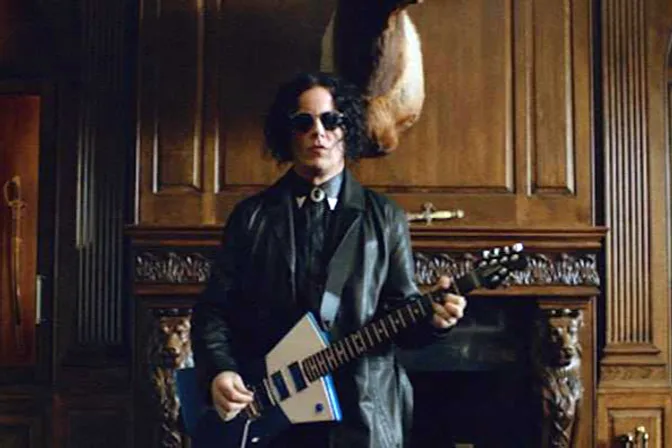 Photo Credit: Jack White's Public Facebook Page
Photo Credit: Jack White's Public Facebook PageJack White, known for his work with The White Stripes, The Raconteurs, The Dead Weather, and his solo career, has become a modern champion of analog recording and vintage equipment. Let’s explore Jack White’s recording history, focusing on his production techniques, studios, and the equipment that helped create his raw, distinctive sound.
The White Stripes Era (1999-2007)
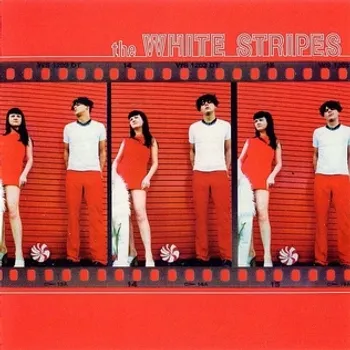
The White Stripes (1999)
- Producer: Jack White
- Recorded: January 15-19, 1999
- Location: Ghetto Recorders, Detroit, Michigan
- Equipment: 8-track Tascam 388 reel-to-reel tape machine, vintage microphones (including Shure SM57s)
- Technique: Minimal overdubs, focus on capturing live performance
- Awards: None
The debut album of The White Stripes was a raw, unpolished gem that set the tone for the duo’s career. Recorded in just five days, Jack and Meg White embraced a DIY ethos that would become their trademark. The album’s lo-fi sound was partly intentional and partly a result of their limited budget and experience.
Jack’s decision to use only red, white, and black on the album cover established the band’s iconic color scheme. The stripped-down instrumentation - just guitar, drums, and vocals - was born out of necessity but became a defining feature of their sound.
One notable mistake-turned-happy-accident occurred during the recording of “Jimmy the Exploder.” Jack’s guitar amp accidentally fell over during the take, creating a unique distortion effect. Rather than re-record, they kept it, embracing the raw, unpredictable nature of their sound.

De Stijl (2000)
- Producer: Jack White
- Recorded: January 2000
- Location: Jack White’s living room, Detroit, Michigan
- Equipment: 8-track Tascam 388 reel-to-reel tape machine, basic microphones
- Technique: DIY recording, minimal production
- Awards: None
“De Stijl” saw The White Stripes refining their sound while maintaining their lo-fi aesthetic. Recorded in Jack’s living room, the album’s intimate feel was a direct result of its makeshift studio environment. The title, referring to the early 20th-century Dutch art movement, reflected Jack’s growing interest in incorporating visual art concepts into his music.
This album marked Jack’s first experiments with slide guitar, most notably on “Death Letter,” a Son House cover that would become a staple of their live shows. The recording process was not without its challenges - neighborhood noise often bled into the tracks, but rather than see this as a problem, Jack embraced it as part of the album’s charm.
One innovation on this album was Jack’s use of a DigiTech Whammy pedal to emulate a bass guitar on several tracks, allowing him to fill out the duo’s sound without adding additional musicians.
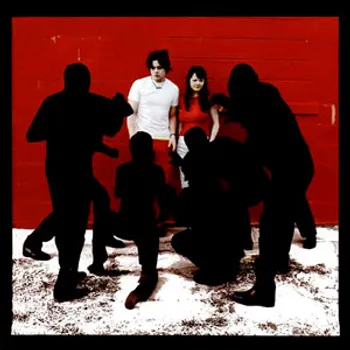
White Blood Cells (2001)
- Producer: Jack White
- Recorded: February 5-7, 2001
- Location: Easley-McCain Recording, Memphis, Tennessee
- Equipment: Analog recording equipment, including vintage tube microphones and preamps
- Technique: Quick recording process (3 days), emphasis on live performance
- Awards:
- Ranked #61 on Rolling Stone’s 500 Greatest Albums of All Time (2020 edition)
- Platinum certification by RIAA
“White Blood Cells” marked a turning point for The White Stripes, catapulting them from underground favorites to mainstream success. The album was intentionally recorded quickly to capture the band’s live energy and prevent overthinking. This approach led to some happy accidents, such as the count-in left on “Fell in Love with a Girl,” which became an iconic part of the song.
Jack’s songwriting took a more personal turn on this album, with tracks like “The Same Boy You’ve Always Known” offering rare glimpses into his psyche. The album also saw the band expanding their sonic palette, incorporating piano on “I’m Finding It Harder to Be a Gentleman” and experimenting with unusual percussion on “Little Room.”
One notable challenge during recording was maintaining the duo’s minimalist approach while creating a fuller sound. Jack solved this by layering multiple guitar parts on some tracks, a technique he had previously avoided.

Elephant (2003)
- Producer: Jack White
- Recorded: April 1-7, 2002
- Location: Toe Rag Studios, London, England
- Equipment: 8-track Studer tape machine, vintage gear from pre-1963
- Technique: No computers used, all analog recording
- Awards:
- Grammy Award for Best Alternative Music Album (2004)
- Platinum certification by RIAA
- Ranked #390 on Rolling Stone’s 500 Greatest Albums of All Time (2020 edition)
“Elephant” represented the pinnacle of Jack White’s analog purism. Recorded at London’s all-analog Toe Rag Studios, the album was made using no equipment newer than 1963. This self-imposed limitation forced the band to be creative in their recording techniques and resulted in the album’s distinctively warm, vintage sound.
The album’s opening track, “Seven Nation Army,” introduced Jack’s most famous riff, created by running his semi-acoustic guitar through a DigiTech Whammy pedal set an octave lower. Ironically, this digital pedal was the only piece of modern equipment used on the album.
One of the biggest challenges during recording was capturing Meg’s drum sound. The solution came in the form of placing the drums in the studio’s reverb chamber, creating the massive sound heard on tracks like “Ball and Biscuit.”
The album also saw Jack expanding his vocal range, particularly on “There’s No Home for You Here,” where he layered multiple vocal tracks to create a Queen-like choral effect.
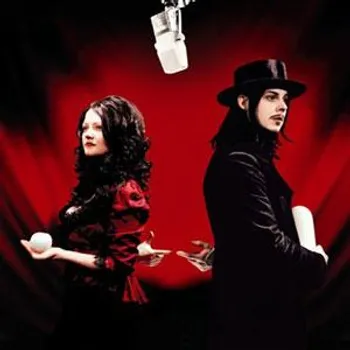
Get Behind Me Satan (2005)
- Producer: Jack White
- Recorded: February-March 2005
- Location: Third Man Studio (Jack’s home studio), Detroit, Michigan
- Equipment: Analog recording equipment, various acoustic instruments
- Technique: Experimentation with new instruments (marimba, piano), less guitar-focused
- Awards:
- Grammy Award for Best Alternative Music Album (2006)
- Gold certification by RIAA
“Get Behind Me Satan” marked a significant departure from The White Stripes’ established sound. Recorded in Jack’s home studio, the album saw him largely abandoning his electric guitar in favor of piano, marimba, and acoustic guitar. This shift was partly inspired by Jack’s desire to challenge himself and partly by a hand injury that made playing electric guitar difficult during the writing process.
The album’s lead single, “Blue Orchid,” featured a heavily processed guitar sound achieved by running the signal through a DigiTech Whammy pedal, showcasing Jack’s continued experimentation with effects. The track “The Nurse” introduced the marimba as a lead instrument, creating one of the band’s most unique soundscapes to date.
One of the biggest challenges during recording was capturing the sound of the marimba. Jack eventually settled on using a pair of overhead microphones to capture both the attack and the resonance of the instrument.
The album’s raw, almost demo-like quality was intentional, with Jack preferring to capture the immediacy of the performances rather than polishing them to perfection. This approach led to some criticism but also resulted in one of the band’s most diverse and experimental albums.
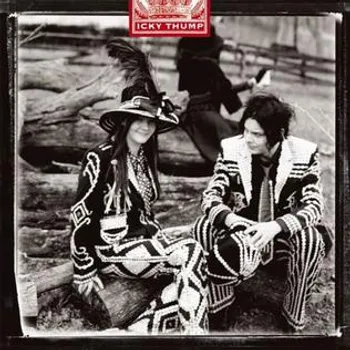
Icky Thump (2007)
- Producer: Jack White
- Recorded: February 5 - March 15, 2007
- Location: Blackbird Studio, Nashville, Tennessee
- Equipment: Analog tape machines (including Studer A800 MkIII), vintage Neve console, array of vintage microphones and outboard gear
- Technique: More complex arrangements, longer recording process than previous albums
- Awards:
- Grammy Award for Best Alternative Music Album (2008)
- Grammy Award for Best Rock Performance by a Duo or Group with Vocal for “Icky Thump” (2008)
- Platinum certification by RIAA
“Icky Thump,” the final studio album from The White Stripes, saw the duo embracing a more polished, expansive sound while maintaining their analog roots. Recorded at the high-end Blackbird Studio in Nashville, this album had the longest recording process of any White Stripes record, allowing for more experimentation and refinement.
The title track featured one of Jack’s most recognizable riffs, created using a DigiTech Whammy pedal and a Fender Twin Reverb amp. The song “Conquest” saw the band incorporating mariachi horns, a first for The White Stripes, showcasing their willingness to push genre boundaries.
One of the most innovative aspects of the album was Jack’s use of the Scottish bagpipes on “Prickly Thorn, But Sweetly Worn” and “St. Andrew (This Battle Is in the Air).” Learning to play and record this notoriously difficult instrument presented a unique challenge, but the result added a distinctive flavor to the album.
The recording process wasn’t without its difficulties. Jack and Meg reportedly struggled with the pressure of creating a follow-up to their highly successful previous albums, leading to some tension in the studio. Despite this, or perhaps because of it, “Icky Thump” emerged as one of their most sonically diverse and ambitious works.
The Raconteurs and Solo Career (2006-present)
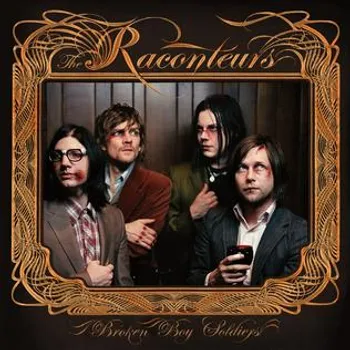
Broken Boy Soldiers (The Raconteurs, 2006)
- Producers: Jack White, Brendan Benson
- Recorded: Late 2005
- Location: Brendan Benson’s home studio, Detroit, Michigan
- Equipment: Analog recording equipment, vintage guitars and amplifiers
- Technique: Collaborative songwriting, blend of White’s raw approach with Benson’s power pop sensibilities
- Awards:
- Nominated for Grammy Award for Best Rock Album (2007)
- Gold certification by RIAA
“Broken Boy Soldiers” marked Jack White’s first major project outside of The White Stripes. The album was born out of a casual collaboration between White and Brendan Benson, starting with the song “Steady, As She Goes,” which became the album’s lead single.
Recorded in Benson’s home studio, the album allowed White to explore a more collaborative songwriting process and a fuller band sound. The challenge was to blend White’s raw, blues-influenced style with Benson’s power-pop sensibilities. This fusion resulted in a unique sound that distinguished The Raconteurs from White’s work with The White Stripes.
One of the most innovative aspects of the album was its use of dual lead vocals, with White and Benson often trading lines or harmonizing. This approach is particularly evident on tracks like “Hands” and “Together.”
The recording process was more relaxed than White’s usual quick-fire approach, allowing for more experimentation with arrangements and production techniques. However, they still maintained an element of spontaneity, often keeping first or second takes to preserve the energy of the performances.
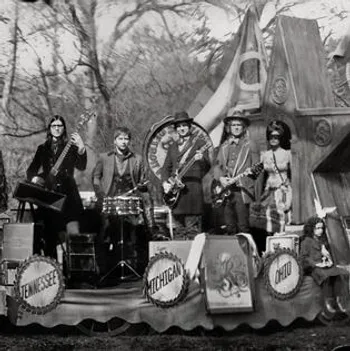
Consolers of the Lonely (The Raconteurs, 2008)
- Producers: Jack White, Brendan Benson
- Recorded: Late 2007 - Early 2008
- Location: Blackbird Studio, Nashville, Tennessee
- Equipment: Analog tape machines, vintage microphones (including Neumann U47s) and outboard gear
- Technique: Quick recording and mixing process, maintaining spontaneity
- Awards:
- Grammy Award for Best Engineered Album, Non-Classical (2009)
- Gold certification by RIAA
“Consolers of the Lonely” saw The Raconteurs pushing their sound in new directions while maintaining the energy of their debut. Recorded at Blackbird Studio in Nashville, the album benefited from the studio’s extensive collection of vintage equipment.
One of the most notable aspects of this album was its surprise release. The band went from finishing the album to releasing it in just three weeks, bypassing the usual months-long promotion cycle. This unconventional approach was designed to let fans hear the music as soon as it was ready, without the filter of music critics or industry marketing.
Musically, the album saw the band incorporating more diverse influences, from the country-tinged “Old Enough” to the hard rock of “Five on the Five.” The song “Carolina Drama” showcased White’s storytelling abilities, weaving a complex narrative over a folk-rock backdrop.
A particular innovation on this album was the use of a 1970s synthesizer called the Univox on “The Switch and the Spur,” adding an unexpected texture to the band’s otherwise analog sound.
Despite the quick turnaround from recording to release, the album sounds polished and fully realized, a testament to the band’s musical chemistry and the skill of the production team.
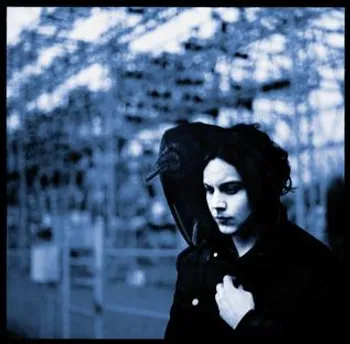
Blunderbuss (Solo, 2012)
- Producer: Jack White
- Recorded: 2011
- Location: Third Man Studio, Nashville, Tennessee
- Equipment: Ampex 8-track tape machine, vintage microphones (including RCA 44-BX ribbon mics), tube preamps
- Technique: Live room recordings, minimal overdubs
- Awards:
- Nominated for Grammy Award for Album of the Year (2013)
- Nominated for Grammy Award for Best Rock Album (2013)
- Platinum certification by RIAA
“Blunderbuss” marked Jack White’s debut as a solo artist, allowing him to fully explore his musical vision without the constraints of a band dynamic. Recorded at his own Third Man Studio, the album showcased a more diverse range of styles and instrumentation than his previous work.
One of the most innovative aspects of the recording process was White’s use of two different backing bands - one all-male and one all-female. He would often record the same song with both bands, choosing the version that best captured the song’s essence. This approach led to a dynamic and varied sound throughout the album.
The title track featured a unique recording technique where White played a guitar through a rotating Leslie speaker cabinet, creating a distinctive swirling effect. On “Freedom at 21,” he experimented with hip-hop inspired drum patterns, pushing his sound in new directions.
A notable challenge during recording was capturing the right piano sound for songs like “Hypocritical Kiss.” White eventually settled on an upright piano with a slightly out-of-tune character, which added to the album’s raw, emotional feel.

Lazaretto (Solo, 2014)
- Producer: Jack White
- Recorded: 2012-2014
- Location: Third Man Studio, Nashville, Tennessee
- Equipment: Analog tape machines, vintage gear, custom-built equipment
- Technique: Blend of planned compositions and improvisation
- Awards:
- Grammy Award for Best Rock Performance for “Lazaretto” (2015)
- Nominated for Grammy Award for Best Alternative Music Album (2015)
- Gold certification by RIAA
“Lazaretto” saw White pushing the boundaries of both his songwriting and the vinyl format itself. The album’s “Ultra LP” version included several innovative features, such as dual-groove technology, hidden tracks under the label, and holograms etched into the dead wax.
Musically, the album continued White’s exploration of diverse genres. The title track blended rock with hip-hop elements, while “Temporary Ground” incorporated country and folk influences. “High Ball Stepper” was a notable instrumental track that showcased White’s guitar prowess.
One of the most unique aspects of the album’s creation was White’s approach to lyrics. He used plays and poems he had written as a teenager as the basis for many of the songs, reworking and updating them for the album. This resulted in a blend of youthful energy and mature craftsmanship.
A particular challenge during recording was capturing the fiddle parts on tracks like “Temporary Ground.” White worked closely with fiddler Fats Kaplin to achieve the desired sound, often recording in the early hours of the morning when the studio was at its quietest.

Boarding House Reach (Solo, 2018)
- Producer: Jack White
- Recorded: 2017
- Location: Third Man Studio, Nashville; Sear Sound, New York City; Capitol Studios, Los Angeles
- Equipment: Blend of analog tape and digital recording (Pro Tools), vintage synthesizers, drum machines
- Technique: Experimentation with drum machines and synthesizers, while maintaining analog ethos
- Awards:
- Nominated for Grammy Award for Best Alternative Music Album (2019)
“Boarding House Reach” represented White’s most experimental and divisive work to date. For the first time, he incorporated digital recording techniques, using Pro Tools alongside his beloved analog equipment. This hybrid approach allowed for more complex arrangements and editing possibilities.
The album saw White venturing into new sonic territories, incorporating elements of funk, electronic music, and spoken word. Tracks like “Corporation” and “Ice Station Zebra” showcased his newfound interest in synthesizers and drum machines, while still maintaining his signature guitar work.
One of the most innovative aspects of the album was White’s approach to composing. He often started with drum machine patterns or synthesizer sequences, building songs from these electronic foundations - a significant departure from his usual guitar-based writing style.
A major challenge during the recording process was integrating these new electronic elements with White’s established analog sound. This required careful balancing and mixing to ensure the album maintained a cohesive feel despite its eclectic nature.

Fear of the Dawn (Solo, 2022)
- Producer: Jack White
- Recorded: 2021
- Location: Third Man Studio, Nashville, Tennessee
- Equipment: Analog tape machines, vintage gear, some digital technology
- Technique: Blend of heavy rock sounds with electronic elements
- Awards: Too recent for major awards at the time of writing
“Fear of the Dawn” marked Jack White’s fourth solo studio album and represented a bold step into new sonic territories. The album blends White’s signature guitar-driven rock with electronic elements, creating a sound that’s both familiar and futuristic.
One of the most striking aspects of the album is its heavy use of synthesizers and digital effects, showcasing White’s willingness to embrace modern technology while still maintaining his analog roots. The title track, for instance, features a guitar tone achieved by running his signal through a synth pedal, creating a unique fusion of analog and digital sounds.
The album’s lead single, “Taking Me Back,” sets the tone with its aggressive guitar riffs and pulsating electronic beats. This marriage of rock and electronic elements is a recurring theme throughout the album, evident in tracks like “Hi-De-Ho” (featuring Q-Tip) and “Into the Twilight.”
White’s experimentation extends to the album’s production techniques. On “Eosophobia,” he employs a talk box effect on his guitar, creating an otherworldly sound that pushes the boundaries of his instrument. The track “What’s The Trick?” showcases his ability to blend blues rock with almost industrial-sounding percussion.
A particular challenge during the recording process was balancing the raw energy of live performance with the precision of electronic production. White addressed this by recording many of the basic tracks live and then layering electronic elements on top, preserving the spontaneity he’s known for while exploring new sonic landscapes.
The album also features some of White’s most complex arrangements to date. “The White Raven” in particular stands out with its shifting time signatures and intricate guitar work, demonstrating White’s growth as a composer and musician.

Entering Heaven Alive (Solo, 2022)
- Producer: Jack White
- Recorded: 2021
- Location: Third Man Studio, Nashville, Tennessee
- Equipment: Analog tape machines, vintage acoustic instruments
- Technique: Focus on acoustic arrangements, folk and blues influences
- Awards: Too recent for major awards at the time of writing
These two albums, released just months apart, showcased different sides of White’s musical personality. “Fear of the Dawn” continued the experimental approach of “Boarding House Reach,” blending hard rock with electronic elements. “Entering Heaven Alive,” by contrast, was a more stripped-down, acoustic-oriented album.
For “Fear of the Dawn,” White pushed his guitar playing to new extremes, using a variety of effects and techniques to create a dense, often chaotic sound. The title track featured a guitar tone achieved by running his signal through a synth pedal, creating a unique fusion of analog and digital sounds.
“Entering Heaven Alive” presented its own challenges, as White sought to create an intimate, acoustic-driven album that still felt dynamic and engaging. He incorporated a wider range of acoustic instruments, including upright bass and fiddle, to add depth to the arrangements.
One innovative aspect of these albums was their conceptual release - two distinct but related works showcasing different facets of White’s artistry. This approach allowed him to fully explore contrasting musical ideas without compromising the integrity of either album.
The Dead Weather

Horehound (2009)
- Producer: Jack White
- Recorded: January 2009 (3 weeks)
- Location: Third Man Studio, Nashville, Tennessee
- Equipment: Analog tape machines, vintage guitars and amplifiers
- Technique: Quick recording process, emphasis on raw, live sound
- Awards: No major awards, but critically acclaimed and commercially successful
“Horehound” marked the debut of The Dead Weather, a supergroup featuring Jack White on drums, Alison Mosshart (The Kills) on vocals, Dean Fertita (Queens of the Stone Age) on guitar, and Jack Lawrence (The Raconteurs) on bass. The album was born out of an impromptu jam session when The Raconteurs and The Kills were on tour together.
One of the most notable aspects of this project was White’s position as drummer and occasional vocalist, rather than lead guitarist. This shift in roles allowed him to approach songwriting from a different perspective, resulting in a heavier, more rhythmically driven sound than his previous work.
The album was recorded in an intensely creative three-week period, with many of the songs emerging from improvised jam sessions. This spontaneous approach is evident in tracks like “I Cut Like a Buffalo,” which features a raw, almost unhinged energy.
A particular innovation on this album was the use of unusual percussion instruments. On “So Far From Your Weapon,” White incorporated a large chain dropped onto a steel plate to create a unique rhythmic texture.
One challenge during recording was capturing Mosshart’s powerful vocal performances. The solution was to record many of her parts live with the band, preserving the intensity of her delivery.
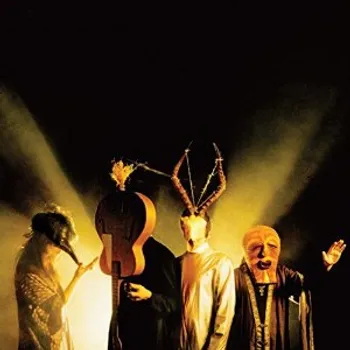
Sea of Cowards (2010)
- Producer: Jack White
- Recorded: December 2009
- Location: Third Man Studio, Nashville, Tennessee
- Equipment: Analog tape machines, vintage gear, extensive use of effects pedals
- Technique: Emphasis on spontaneity, heavy use of effects and distortion
- Awards: No major awards, but critically acclaimed
“Sea of Cowards,” recorded just months after the release of “Horehound,” saw The Dead Weather pushing their sound to even heavier and more experimental territories. The quick turnaround between albums allowed the band to maintain the creative momentum from their debut.
This album featured an increased use of synthesizers and effects pedals, creating a denser, more psychedelic sound. Tracks like “Blue Blood Blues” showcased White’s innovative approach to drum patterns, incorporating unconventional rhythms and sounds.
One of the most unique aspects of the recording process was the band’s approach to songwriting. Many tracks were built from improvised jams, with the band recording hours of material and then editing it down into cohesive songs. This approach is particularly evident in the sprawling, jam-like quality of “I’m Mad” and “Old Mary.”
A notable challenge during recording was balancing the various sonic elements in the mix. The heavy use of distortion and effects required careful attention to ensure each instrument remained distinct in the dense soundscape.

Dodge and Burn (2015)
- Producer: Jack White
- Recorded: 2013-2015
- Location: Third Man Studio, Nashville, Tennessee
- Equipment: Analog tape machines, vintage gear, blend of old and new instruments
- Technique: Recorded in spurts over two years, blending planned compositions with improvisation
- Awards: No major awards, but critically well-received
“Dodge and Burn” marked a slight departure from The Dead Weather’s previous approach. Rather than being recorded in one intense session, the album was created over a two-year period, with the band coming together for short bursts of creativity between other projects.
This extended timeframe allowed for more pre-planning and refinement of ideas, resulting in a more polished sound while still maintaining the band’s raw energy. Tracks like “I Feel Love (Every Million Miles)” showcase a tighter, more structured approach to songwriting.
One innovation on this album was the increased prominence of White’s vocals, often duetting with Mosshart. This is particularly evident on “Three Dollar Hat,” where their contrasting vocal styles create a dynamic interplay.
The album also saw the band experimenting with new sonic textures. “Cop and Go” features an unusual keyboard sound achieved by running a Moog synthesizer through a guitar amp and effects pedals.
A unique challenge during the creation of this album was maintaining the band’s cohesion and energy despite the fragmented recording process. To address this, they often began sessions by jamming on older material to recapture the spirit of their live performances before tackling new songs.
Famous Mixing Techniques & Approaches
Jack White’s approach to mixing is as distinctive and innovative as his recording techniques. Here are some of his famous mixing techniques and approaches:
1. Analog-First Philosophy
White consistently prioritizes analog mixing consoles and outboard gear over digital plugins. He believes this approach adds warmth and character to the mix that’s difficult to achieve with digital tools alone.
2. Minimal Compression
Unlike many modern productions that heavily compress tracks for loudness, White often uses minimal compression. This preserves the dynamic range of the performances, allowing for more natural and expressive sound.
3. Embracing Imperfections
White is known for keeping slight imperfections in the mix, such as bleed between instruments or small timing discrepancies. He believes these elements add to the authenticity and energy of the recording.
4. Creative Panning
White often employs unconventional panning techniques to create a unique stereo image. For example, in The White Stripes’ “Seven Nation Army,” the kick drum is panned slightly off-center, contributing to the track’s distinctive sound.
5. Layered Vocals
In many of his productions, White layers multiple vocal takes to create a fuller, more complex vocal sound. This is evident in tracks like The Dead Weather’s “I Cut Like a Buffalo” and his solo work on “That Black Bat Licorice.”
6. Distortion as a Mixing Tool
White frequently uses distortion not just on guitars, but as a mixing tool for other instruments and even vocals. This helps create a cohesive, gritty sound that’s become part of his signature style.
7. Minimal EQ
White prefers to capture the right sound at the source rather than relying heavily on EQ during mixing. When he does use EQ, it’s often to accentuate the natural characteristics of the instrument rather than to drastically reshape its sound.
8. Live Room Sound
Even in the mix, White tries to preserve the sound of instruments playing together in a room. This often involves careful use of room mics and minimal separation between instruments.
9. Analog Tape Saturation
White frequently runs mixes through analog tape machines to add subtle saturation and warmth. This technique is particularly noticeable on albums like The Raconteurs’ “Consolers of the Lonely.”
10. Balancing Raw and Polished
One of White’s most distinctive mixing approaches is his ability to balance raw, energetic elements with more polished, produced sounds. This is evident in tracks like “Icky Thump,” where distorted guitars sit alongside precisely mixed horns.
11. Mixing for Vinyl
Given White’s passion for vinyl, he often considers how mixes will translate to this format. This might involve adjusting low-end frequencies or stereo width to ensure optimal playback on vinyl systems.
These mixing techniques contribute significantly to the unique sound of Jack White’s productions. By combining vintage approaches with innovative ideas, White has created a mixing style that’s both reverent to the past and forward-thinking.
Jack White on Music and Musicianship: Famous Quotes
Throughout his career, Jack White has shared many insightful and often provocative thoughts on music, creativity, and the craft of musicianship. Here are some of his most famous quotes:
On Creativity and Limitations:
“Forcing yourself to work within a set of limitations is better than having endless options.”
On Technology in Music:
“Technology is a big destroyer of emotion and truth. Auto-tuning doesn’t do anything for creativity. Yeah, it makes it easier and you can get home sooner; but it doesn’t make you a more creative person.”
On the Purpose of Art:
“I think the only thing I’m really strict about is that I don’t like when people don’t mean what they’re doing. I don’t like when people are trying to make music to make money or to become famous.”
On Authenticity:
“Authenticity is invaluable; originality is non-existent.”
On the Creative Process:
“Music is feelings, and it’s sharing those feelings with people.”
On Vinyl and Analog Sound:
“Digital in the music world is so zeroes and ones. It’s so tight and sterile and clean. Analog is beautiful and large and open.”
On Guitar Playing:
“I keep guitars that are, you know, the neck’s a little bit bent and it’s a little bit out of tune. I want to work and battle it and conquer it and make it express whatever attitude I have at that moment. I want it to be a struggle.”
On Songwriting:
“The more you know who you are, and what you are about, the less you have to prove.”
On Live Performance:
“Playing live is all about being in the moment. It’s not about trying to recreate the record or trying to recreate the way you felt when you wrote the song.”
On Musical Evolution:
“If you don’t know the blues… there’s no point in picking up the guitar and playing rock and roll or any other form of popular music.”
On Artistic Integrity:
“I’m always surprised when people say, ‘I don’t like to play to a click track’ or ‘I don’t like to record digitally.’ I’m like, ‘Do you not like to record on a 24-track tape machine?’ Because that’s technology, too. Technology is just a tool.”
On the Role of the Artist:
“The goal of modern propaganda is no longer to transform opinion but to arouse an active and mythical belief.”
These quotes provide insight into Jack White’s philosophy on music, his approach to creativity, and his views on the role of technology in art. They reflect his commitment to authenticity, his respect for musical traditions, and his constant push for innovation within self-imposed limitations.
Final Thoughts
Throughout his career, from The White Stripes to his solo work and side projects, Jack White has consistently pushed the boundaries of rock music while maintaining a deep respect for its roots. His commitment to analog recording techniques, combined with a willingness to experiment with new sounds and technologies, has resulted in a body of work that is both innovative and deeply rooted in tradition.
White’s evolution as a producer and multi-instrumentalist is evident across these projects. From the raw, two-piece simplicity of The White Stripes to the complex, layered soundscapes of his later solo work, he has continually found new ways to express his musical vision.
His work with Third Man Records, including the development of unique vinyl pressing techniques and the preservation of analog recording methods, has had a significant impact on the music industry beyond his own releases.
As Jack White continues to evolve as an artist and producer, his influence on modern rock music remains undeniable. His ability to blend vintage techniques with cutting-edge ideas ensures that each new project brings something fresh and exciting to the musical landscape.
Back